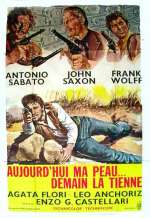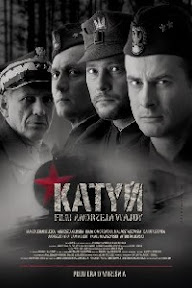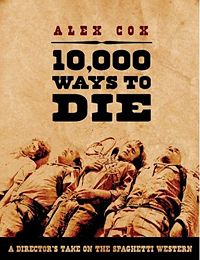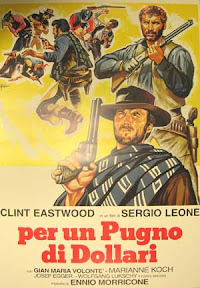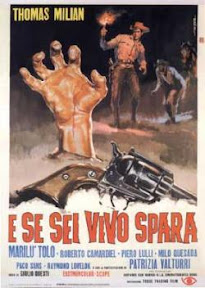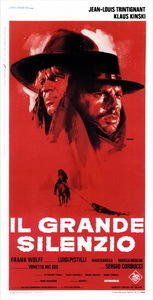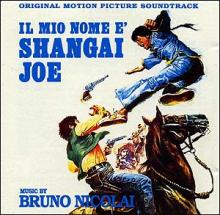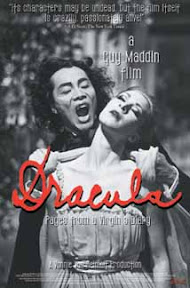 This past weekend Wendigo wanted to clean his palate after watching a wretched cheapo vampire picture from 2008, The Thirst: Blood War. I asked him for a comment on that one, but he says simply, "It's too horrible for words, amateur hour all over the place -- worse than Subspecies or Vampire Journals! People like C. Thomas Howell and Tony Todd must have been hard up to take the money the producers of that one were offering. It was a depressing experience with some of the lamest vampires and lamest actors ever." After watching that one, Wendigo wonders how anyone can question Lon Chaney Jr.'s performance in Robert Siodmak's film for Universal.
This past weekend Wendigo wanted to clean his palate after watching a wretched cheapo vampire picture from 2008, The Thirst: Blood War. I asked him for a comment on that one, but he says simply, "It's too horrible for words, amateur hour all over the place -- worse than Subspecies or Vampire Journals! People like C. Thomas Howell and Tony Todd must have been hard up to take the money the producers of that one were offering. It was a depressing experience with some of the lamest vampires and lamest actors ever." After watching that one, Wendigo wonders how anyone can question Lon Chaney Jr.'s performance in Robert Siodmak's film for Universal.Actually, he knows how. Creighton has been lambasted for being miscast, for looking like Farmer Greenjeans playing a vampire, for being stiff, uncomfortable, incompetent in the role. Wendigo sees things a little differently. He can't deny Junior's awkwardness and discomfort, but he thinks that "Count Alucard" should seem uncomfortable as he finds his way in a new land. He should seem alien if not hostile on his predatory mission to steal America's younger, stronger, more virile blood. He's obviously not a seductive vampire, and only goes after one woman in the entire picture. But this story presents him as more of a Mephistopholes than a macho seducer, a partner in a Faustian bargain rather than a ravisher.
What's the point of the "Alucard" gambit when you've already identified Lon Chaney as "Count Dracula" in the opening credits? But because Universal did that, they felt a need to clarify the whole Alucard problem as quickly as possible, as soon as the Count's luggage arrives.
Even given all that, Chaney's clearly trying hard to keep his speech measured and mannered. If anything, he comes across less like a European aristocrat and more like the Southern plantation owner he aspires to be -- the grooming, the grey hair and the moustache help that. He has the commanding manner of someone accustomed to dominating thralls or slaves -- ironic given his ultimate role in the story. Overall, Wendigo thinks that Junior did a good job. He has a strong presence and is almost at his best in scenes when he simply stands still and stares balefully at people. He's no Lugosi, nor even a Carradine, but then again those two weren't making the kind of film Lon was.
Most people will agree that Count Alucard is damn far from a master vampire. He comes on strong early but as the plot develops Alucard is exposed as a dupe and set up as a victim. Automatically Chaney is going to look weak compared to Lugosi, even the Lugosi of Abbott & Costello Meet Frankenstein who still doesn't take crap from women. But remember: it's Alucard who is made to look weak, and Chaney's just stuck with the role as it's written. And it's not as if Carradine was exactly masterful in House of Frankenstein; as Wendigo says, Dracula was Karloff's bitch in that film, and a pretty hapless one at that.Vamp vs. vamp: Louise Allbritton and Lon Chaney Jr. Below, Allbritton suffers a temporary setback, but doesn't seem to hold the gunshots against her boyfriend later.
Kay makes Frank (Robert Paige) an offer he can't refuse -- so she says.
Speaking for myself, the fact that Son of Dracula isn't a conventional vampire movie is all in its favor. But what is it, exactly? Wendigo and I have a slight difference in emphasis. Noting Robert Siodmak in the director's chair and Louise Allbritton's staggering femme fatale performance, I call this film a film noir. Poor Alucard is being set up for a Postman Always Rings Twice scenario by the master female he thinks he's seduced -- the sap! -- and he never sees it coming. And Frank Stanley, as played by Robert Paige in what must be a career-best turn, is a perfect noir dupe of a hero, not to mention a kind of Renfield elevated to the status of hysterical protagonist.
Wendigo, on the other hand, acknowledges the noir or proto-noir elements, but thinks I should empasize Son's Southern gothic elements. It has a profoundly dysfunctional family at its heart and a doomed, obsessive romance between Kay Caldwell and Frank Stanley that started in childhood and probably has something to do with an early loss. I can't deny that a love so obsessive that you, the femme fatale, are going to seduce frickin' DRACULA so he'll turn you into a vampire, just so you can turn your real boyfriend into one after he throws the Count into the sunlight, so you lovebirds can be together preying on the living forever, is kind of on the gothic side. The genre blend gives the finale, when Frank has to decide whether to follow through on Kay's bargain, an honest tragic weight."I'm a sane man fighting for his soul!" Robert Paige never says this in the film, but if he did, who would blame him?
Wendigo also notes echoes of Bram Stoker's own Dracula (referenced in the film itself!) in certain scenes, particularly his attempted intimidation of the newly-made band of vampire hunters, as well as details that continued in later Universal films. Those include Dracula's moustache (see Carradine), his pretensions to scientific study, and those animated transformation scenes that impressed me as a kid. Robert Siodmak's brother Curt got away from his brain obsession enough to come up with a story (adapted by Eric Taylor) that evokes what came before (including his own concern with gypsies) while aiming the genre toward a new direction. Robert S brings a fresh eye to the proceedings and adds stylistic touches (with major help from the art department, including above-average bat effects) that virtually lift the film from B-movie status. If anything, some of the genre trappings (the need for expert vampire hunters in the fuddy-duddy Van Helsing mold, recitations of lore, etc.) weigh it down.
Maybe it's inevitable that Son of Dracula will disappoint people looking for a Dracula movie, but the qualities that may leave it less satisfactory as that kind of film are the same ones that redeem it for many viewers. Wendigo acknowledges that it's a flawed experiment (it does rather waste Evelyn Ankers, after all), but embraces Son as a fine vampire movie and a good film, period.Lon Chaney Jr's case isn't helped by his being obliged to do really dumb things in his vampire character, especially his attempt to put out a fire by pounding it with a wooden plank. I'd heard that vampires have infantile minds, but this is ridiculous.
Cushing97380 uploaded the Realart trailer for Son of Dracula to YouTube. Here it is:
